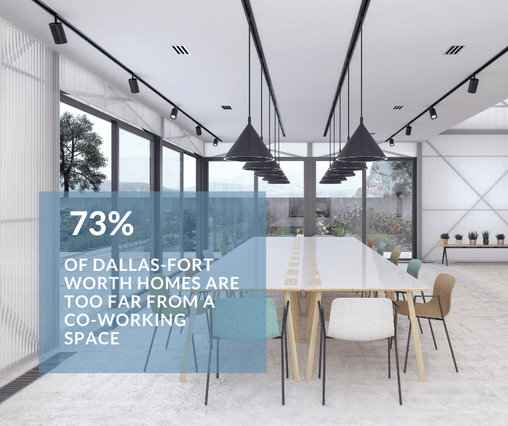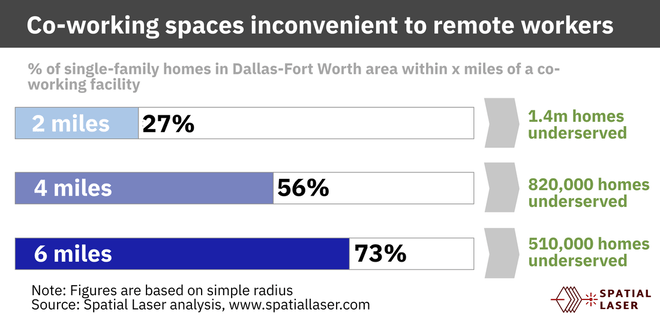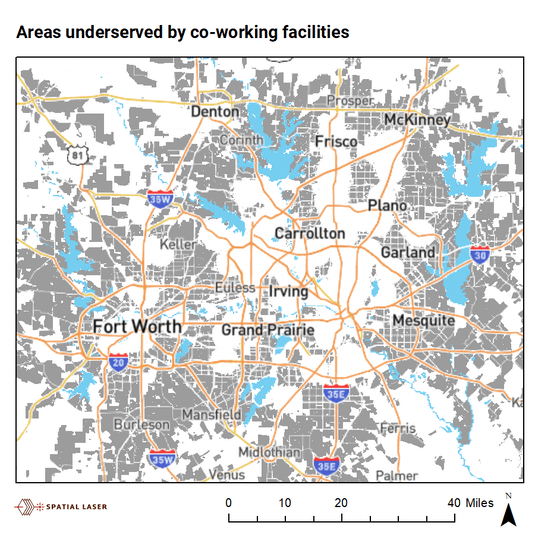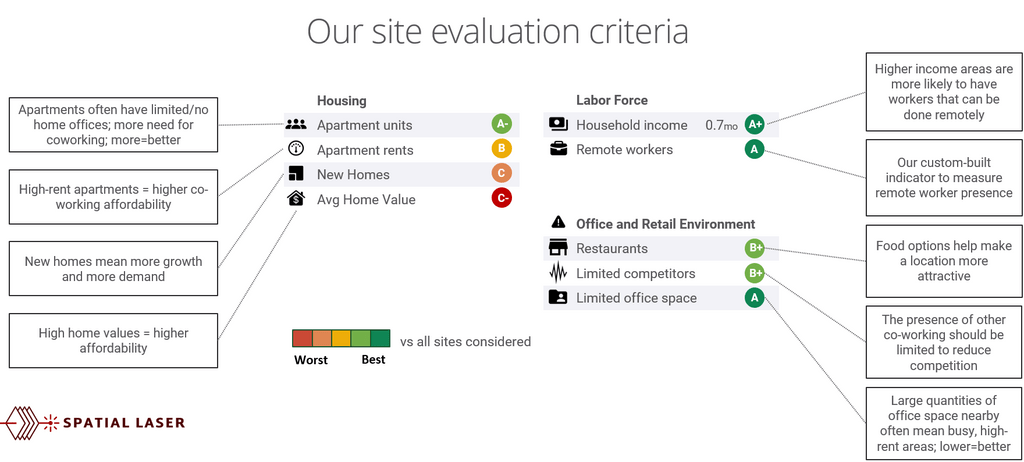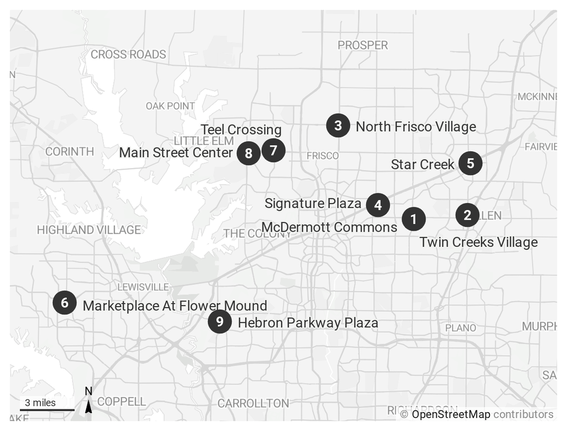The hustle and bustle of urban co-working
A huge co-working craze took off during the 2010s. Soon, companies like WeWork were all over the news. In the Dallas-Fort Worth area, on the eve of the pandemic, there were no less than 200 sites offering some form of co-working, or what many refer to more generally as “flexible office space.”
Typically in urban locations, these bustling locations were often in areas thought of as millennial hotbeds, close to the hubbub of urban activity and social environments that young people craved. Traditionally, owners and operators of co-working spaces gravitated to these urban environments to open new locations as a way to get the highest absorption and occupancy.
For users of co-working spaces, they were a blessing – a way to get a collegial, interesting work environment at relatively low cost. Sometimes, these offered a short, or even walkable commute for an urban apartment dweller.
Urban centers spurned in favor of suburbia
Then, the pandemic changed the dynamic. Remote work become commonplace, and many believe a sizeable number of jobs will stay that way forever. Urban settings — and urban co-working spaces — quickly fell out of favor as many people left the city to escape population density and minimize health risks. As work moved online in era of Zoom, remote workers could go wherever they wanted.
The emphasis of early co-working operators on urban locations is proving to be a mistake.
Suddenly, you had millions of people working out of single-family homes in suburbia or exurbia. Large, suburban homes often have ample space to set up a home office — perhaps an extra bedroom, or even a dedicated office room. The original co-working locations, in the city, became far away and impractical, and the emphasis of early co-working operators on urban locations is proving to be a mistake.
A respite from the home environment remains vital
But there was another problem: working from home is not a complete solution. There needs to be a close-by “third place” that forms a bridge between home and the occasional office visit, even if that office visit is infrequent. Someplace to do focused work, use expensive office equipment, and get a break from the house.
The coffee shop craze of the 2000s is not pandemic-friendly.
The coffee shop craze of the 2000s is not pandemic-friendly. Even post-pandemic, coffee shops have their limitations due to noise and shared, insecure Wi-Fi, among other concerns. Furthermore, suburban co-working spaces are often trailing in quality compared to their urban counterparts, in terms of comfort, facilities, equipment, and finishings.
This brings us to the co-working spaces of the future: close to suburban remote workers, affordable, and a step up from what’s out there today.
This brings us to the co-working spaces of the future: close to suburban remote workers, affordable, and a step up from what’s out there today.
About three-quarters of homes are more than 2 miles of some form of co-working facility.
Only about 27% of single-family homes in the Dallas-Fort Worth metro area, for example, are within 2 miles of some form of co-working facility (if you include executive suites), according to Spatial Laser analysis. This means the other nearly three quarters of Dallas homes require travelling some distance to reach one of these facilities. Areas of single-family housing without convenient access to co-working spaces are shown below in grey:
Areas of single-family housing that are more than two miles from any co-working space
Where should new co-working spaces open?
We set out to form a starter framework for where these new co-working spaces might go:
- Shopping centers. Some are under-utilized and have elevated vacancy. Retail has taken a bit hit during the pandemic. They are close to homes and have ample parking.
- Close to remote workers. We looked at job statistics from one of the major job portals and were able to derive a work-from-home index that is based upon educational levels.
- Close to suburban apartments. Many of these were built to house workers in suburban office parks. Now, apartment dwellers are forced to work at home. Many apartments are cramped and lack space for a home office. Therefore, proximity to apartments is a boost. Apartments with slightly higher rents are preferred, as they will have a greater concentration of remote workers.
- Close to new single-family home construction. This is a leading indicator of demand.
- Higher home value and household income preferred. It does not need to be extremely high, but above a certain level helps select for the remote-worker occupations.
- Close to restaurants – food options make a place a lot more attractive.
- Limited competition – of course, voids or (white spaces) in the market help, but are not a must.
- Limited conventional office space – these areas are too expensive and too busy.
Site evaluation criteria we may use to evaluate co-working locations
What to do
With the changes happening in the demand landscape for co-working spaces, think about whether a strategy adjustment may help. We can always help.

